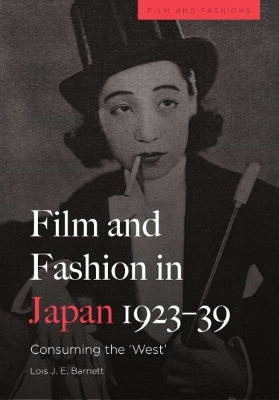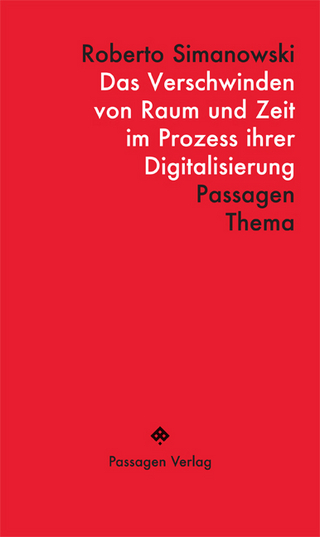
Film and Fashion in Japan, 1923-39
Consuming the 'West'
Seiten
2023
Edinburgh University Press (Verlag)
978-1-4744-9770-1 (ISBN)
Edinburgh University Press (Verlag)
978-1-4744-9770-1 (ISBN)
Examines Western-inspired fashion objects in Japanese cinema between 1923 and 1939
Consults varied primary Japanese-language source material, such as visual analysis of extant films; film fragments and stills from the era; advertising ephemera such as film posters and match boxes; and various print-based materials
Provides film analysis and synopses of many Japanese films which are not yet commercially available and/or subtitled in English
Concentrates equally on depictions of menswear and womenswear there is currently a bias towards depictions of women's styles in both fashion and film studies
Discusses the history of issues highly relevant to today's media climate in a non-American and non-European context
Presents fashion as a means of coding identities both on- and off-screen case studies include the Modern Girl (the Japanese variant of the Hollywood flapper), the Modern Boy (a foppish masculine archetype), the modernising Japanese housewife and the healthy sportsperson.
Discusses LGBT identities and the usage of fashion to depict them in both Japanese and Hollywood cinemas
Film and Fashion in Japan, 1923-39 examines the interaction between the audience member and Japan's film and fashion industries, focusing on Western-inspired fashion objects as opposed to indigenous Japanese items. Taking an interdisciplinary approach, Barnett examines the semiotics of dress onscreen within Japan's transcultural media climate, consulting not only film- or fashion-related theoretical bases but also historical and gender-based approaches.
The work consults surviving films, print media and advertising materials, allowing insights into lost films and the period's thriving commercial context. It focuses on the expressive Modern Girl image (the Japanese equivalent of the Hollywood flapper); sportswear and hybridised dress styles (which combined Japanese and Western-influenced aesthetics) and their relationship with body; and menswear in the early work of the director Ozu Yasujir?. This book discusses the role of fashion consumption in defining emergent modern identities and their relationships with new spaces, questioning their arising in the Japanese context and within the global sphere.
Consults varied primary Japanese-language source material, such as visual analysis of extant films; film fragments and stills from the era; advertising ephemera such as film posters and match boxes; and various print-based materials
Provides film analysis and synopses of many Japanese films which are not yet commercially available and/or subtitled in English
Concentrates equally on depictions of menswear and womenswear there is currently a bias towards depictions of women's styles in both fashion and film studies
Discusses the history of issues highly relevant to today's media climate in a non-American and non-European context
Presents fashion as a means of coding identities both on- and off-screen case studies include the Modern Girl (the Japanese variant of the Hollywood flapper), the Modern Boy (a foppish masculine archetype), the modernising Japanese housewife and the healthy sportsperson.
Discusses LGBT identities and the usage of fashion to depict them in both Japanese and Hollywood cinemas
Film and Fashion in Japan, 1923-39 examines the interaction between the audience member and Japan's film and fashion industries, focusing on Western-inspired fashion objects as opposed to indigenous Japanese items. Taking an interdisciplinary approach, Barnett examines the semiotics of dress onscreen within Japan's transcultural media climate, consulting not only film- or fashion-related theoretical bases but also historical and gender-based approaches.
The work consults surviving films, print media and advertising materials, allowing insights into lost films and the period's thriving commercial context. It focuses on the expressive Modern Girl image (the Japanese equivalent of the Hollywood flapper); sportswear and hybridised dress styles (which combined Japanese and Western-influenced aesthetics) and their relationship with body; and menswear in the early work of the director Ozu Yasujir?. This book discusses the role of fashion consumption in defining emergent modern identities and their relationships with new spaces, questioning their arising in the Japanese context and within the global sphere.
Lois J. E. Barnett is a Postdoctoral Research Associate at the School of Oriental and African Studies, University of London (SOAS).
| Erscheinungsdatum | 05.08.2023 |
|---|---|
| Reihe/Serie | Film and Fashions |
| Zusatzinfo | 35 colour illustrations 35 colour images |
| Verlagsort | Edinburgh |
| Sprache | englisch |
| Maße | 170 x 244 mm |
| Themenwelt | Kunst / Musik / Theater ► Design / Innenarchitektur / Mode |
| Kunst / Musik / Theater ► Film / TV | |
| Kunst / Musik / Theater ► Kunstgeschichte / Kunststile | |
| Sozialwissenschaften ► Kommunikation / Medien ► Medienwissenschaft | |
| ISBN-10 | 1-4744-9770-5 / 1474497705 |
| ISBN-13 | 978-1-4744-9770-1 / 9781474497701 |
| Zustand | Neuware |
| Informationen gemäß Produktsicherheitsverordnung (GPSR) | |
| Haben Sie eine Frage zum Produkt? |
Mehr entdecken
aus dem Bereich
aus dem Bereich
wie KI und virtuelle Welten von uns Besitz ergreifen – und die …
Buch | Hardcover (2023)
Heyne (Verlag)
22,00 €
Buch | Softcover (2023)
Passagen (Verlag)
18,00 €


